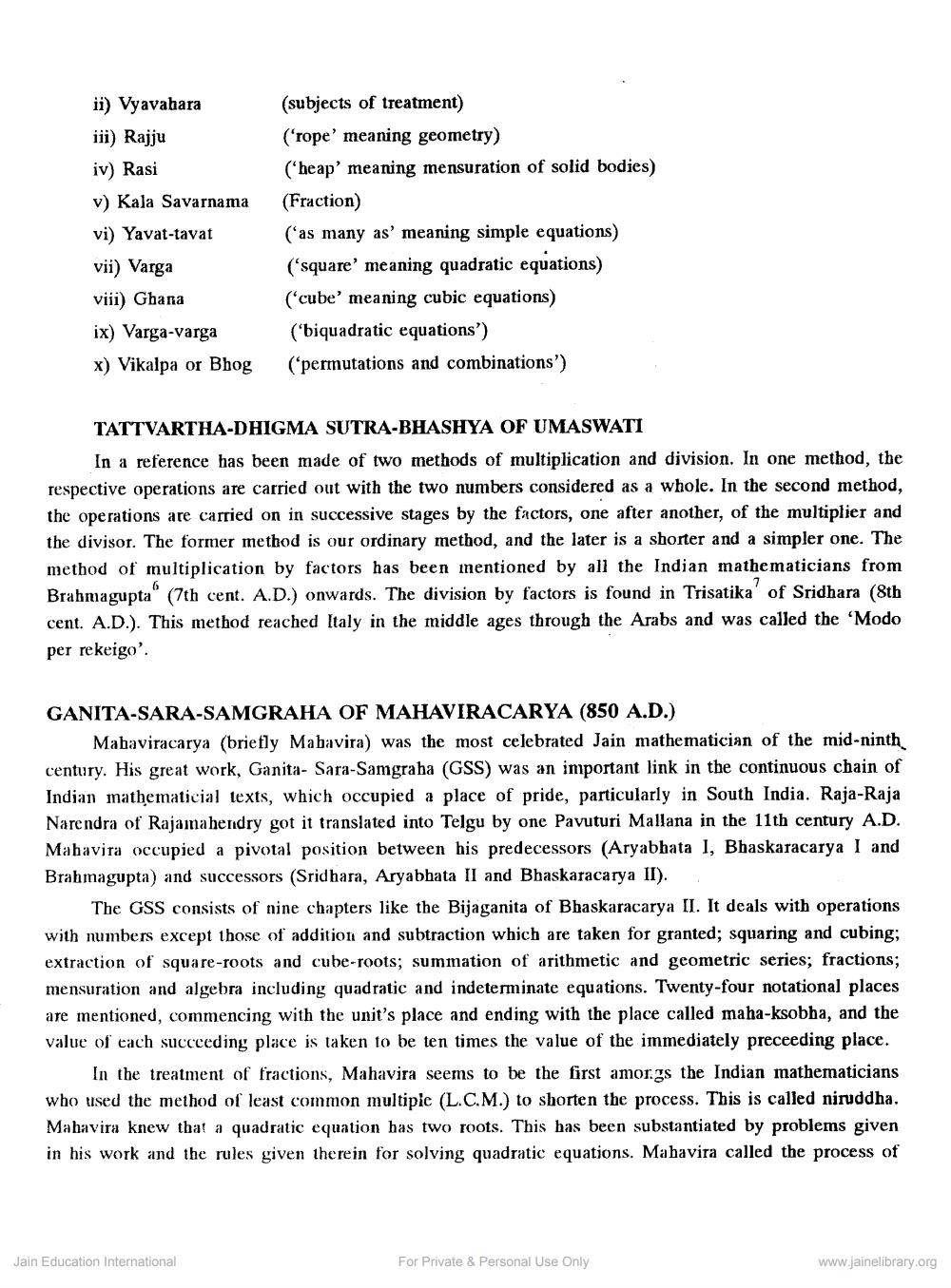________________
ii) Vyavabara
iii) Rajju
iv) Rasi
v) Kala Savarnama
vi) Yavat-tavat
vii) Varga
viii) Ghana
ix) Varga-varga
x) Vikalpa or Bhog
(subjects of treatment)
('rope' meaning geometry)
('heap' meaning mensuration of solid bodies) (Fraction)
(as many as meaning simple equations) ('square' meaning quadratic equations) ('cube' meaning cubic equations) ('biquadratic equations')
('permutations and combinations')
TATTVARTHA-DHIGMA SUTRA-BHASHYA OF UMASWATI
In a reference has been made of two methods of multiplication and division. In one method, the respective operations are carried out with the two numbers considered as a whole. In the second method, the operations are carried on in successive stages by the factors, one after another, of the multiplier and the divisor. The former method is our ordinary method, and the later is a shorter and a simpler one. The method of multiplication by factors has been mentioned by all the Indian mathematicians from Brahmagupta (7th cent. A.D.) onwards. The division by factors is found in Trisatika' of Sridhara (8th cent. A.D.). This method reached Italy in the middle ages through the Arabs and was called the 'Modo per rekeigo".
6
GANITA-SARA-SAMGRAHA OF MAHAVIRACARYA (850 A.D.)
Mahaviracarya (briefly Mahavira) was the most celebrated Jain mathematician of the mid-ninth century. His great work, Ganita- Sara-Samgraha (GSS) was an important link in the continuous chain of Indian mathematicial texts, which occupied a place of pride, particularly in South India. Raja-Raja Narendra of Rajamahendry got it translated into Telgu by one Pavuturi Mallana in the 11th century A.D. Mahavira occupied a pivotal position between his predecessors (Aryabhata 1, Bhaskaracarya 1 and Brahmagupta) and successors (Sridhara, Aryabhata II and Bhaskaracarya II).
The GSS consists of nine chapters like the Bijaganita of Bhaskaracarya II. It deals with operations with numbers except those of addition and subtraction which are taken for granted; squaring and cubing; extraction of square-roots and cube-roots; summation of arithmetic and geometric series; fractions; mensuration and algebra including quadratic and indeterminate equations. Twenty-four notational places are mentioned, commencing with the unit's place and ending with the place called maha-ksobha, and the value of each succeeding place is taken to be ten times the value of the immediately preceeding place.
Jain Education International
In the treatment of fractions, Mahavira seems to be the first amor.gs the Indian mathematicians who used the method of least common multipic (L.C.M.) to shorten the process. This is called niruddha. Mahavira knew that a quadratic equation has two roots. This has been substantiated by problems given in his work and the rules given therein for solving quadratic equations. Mahavira called the process of
For Private & Personal Use Only
www.jainelibrary.org




